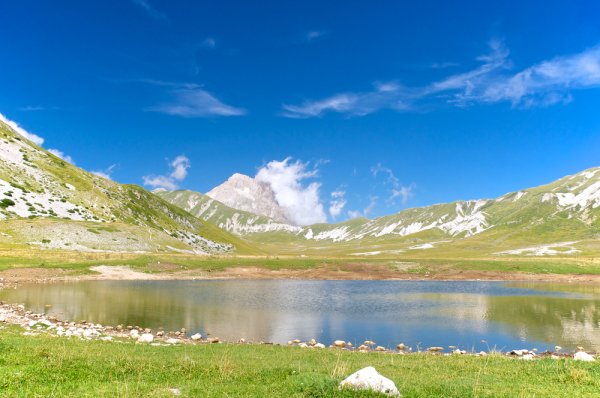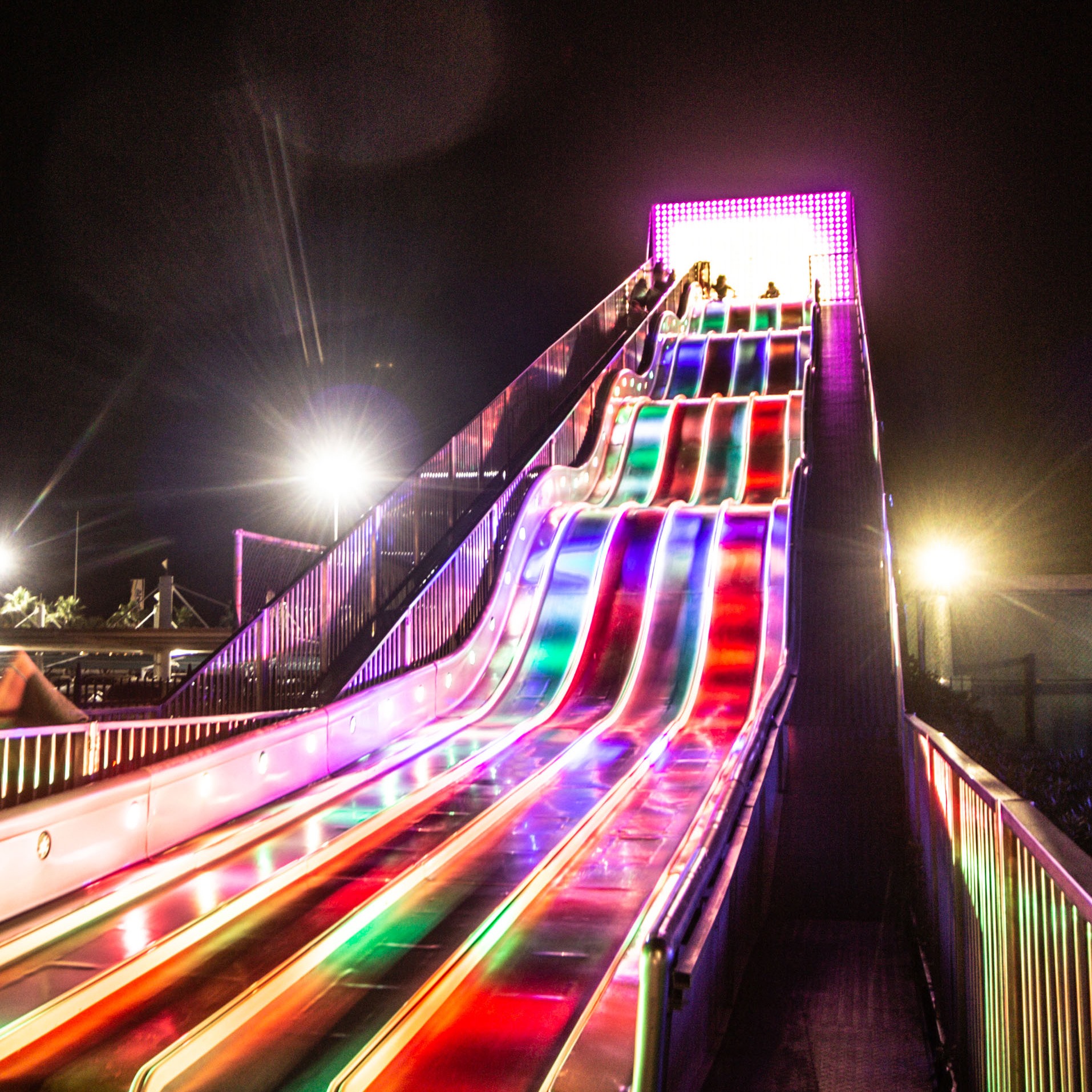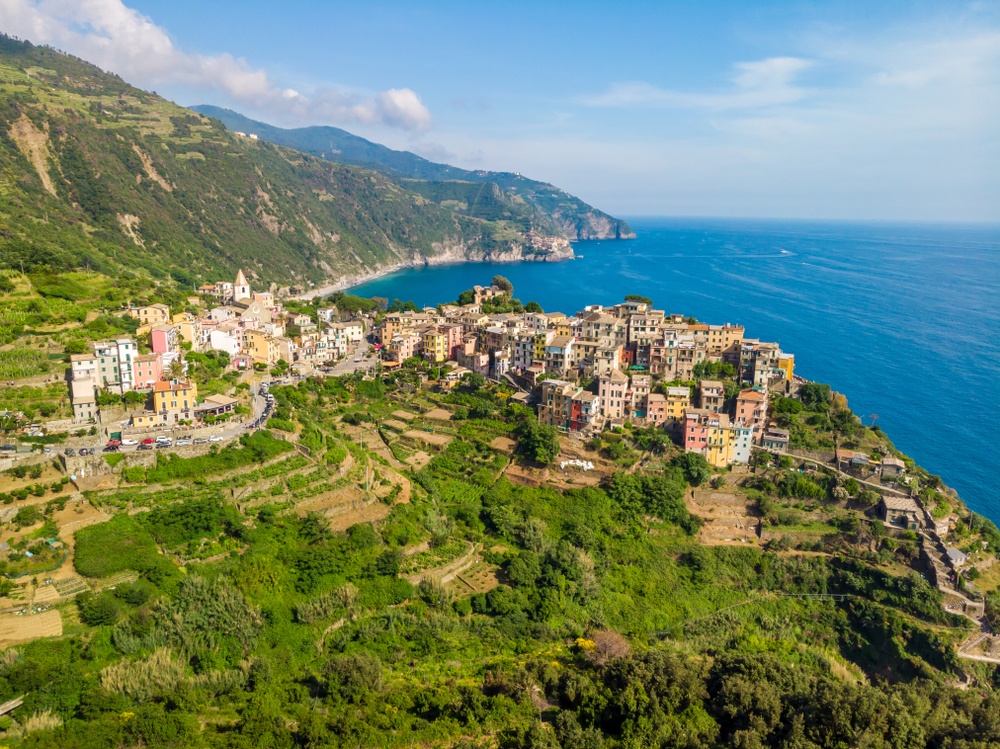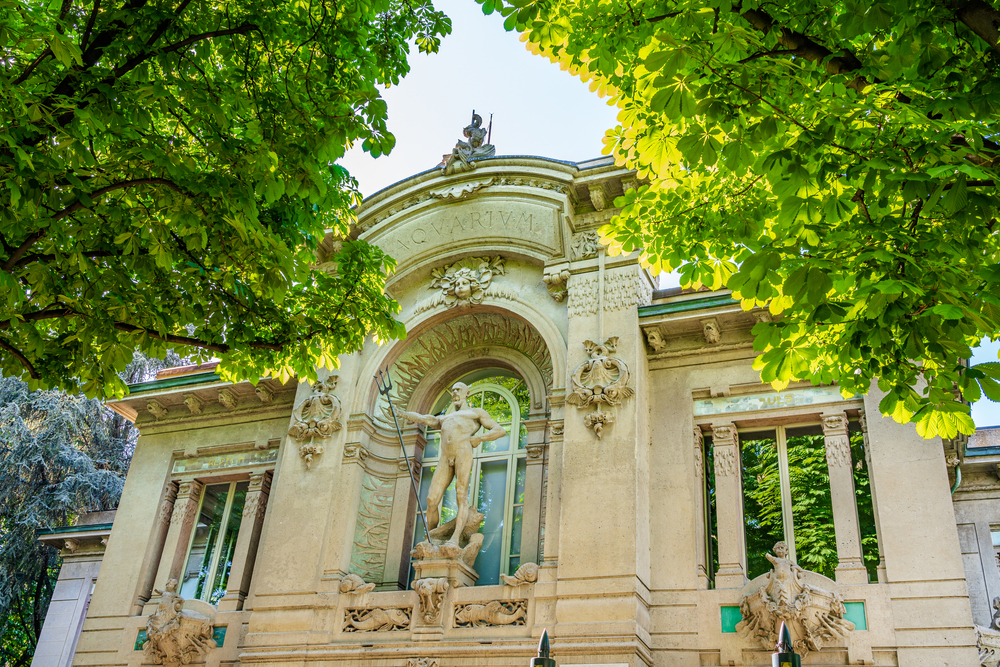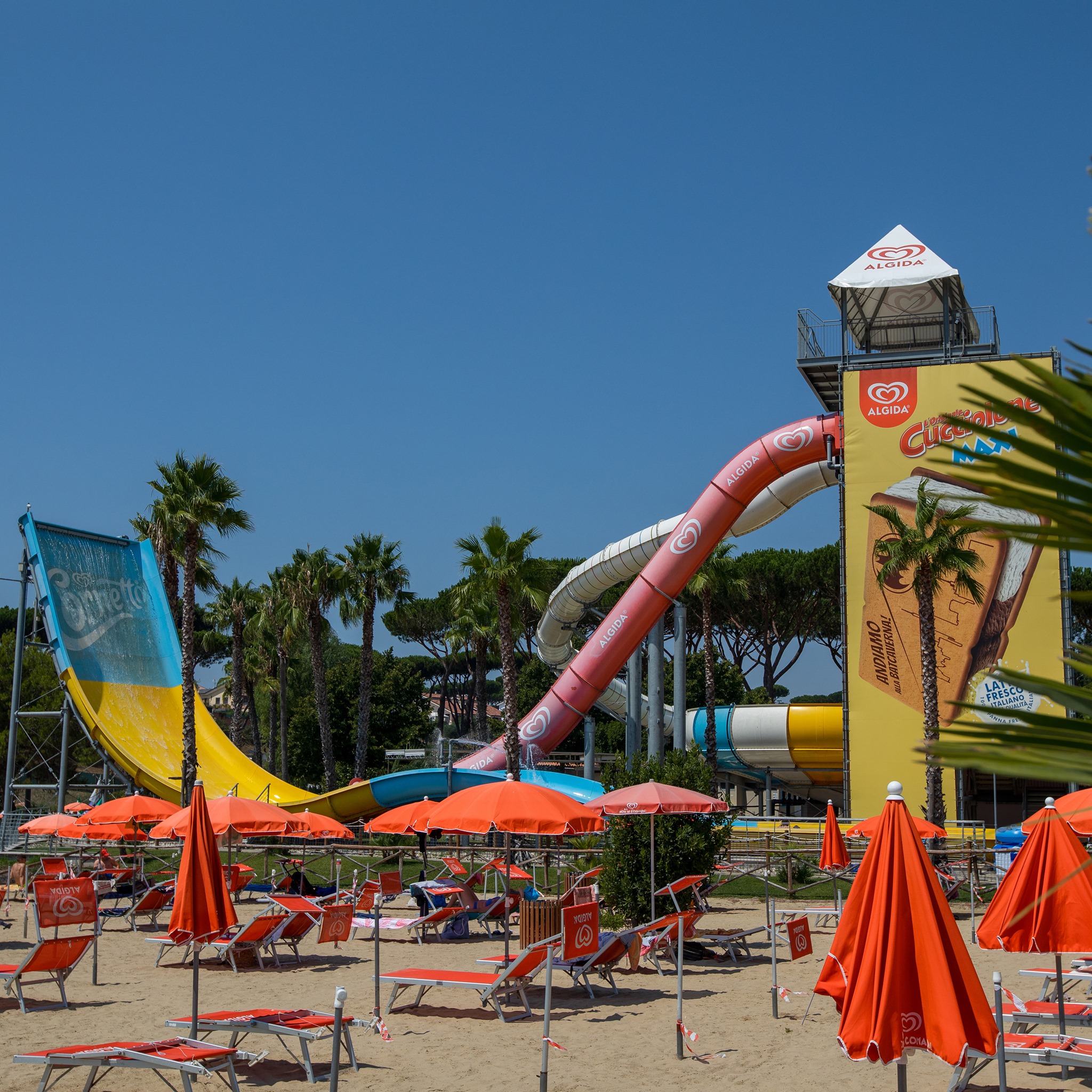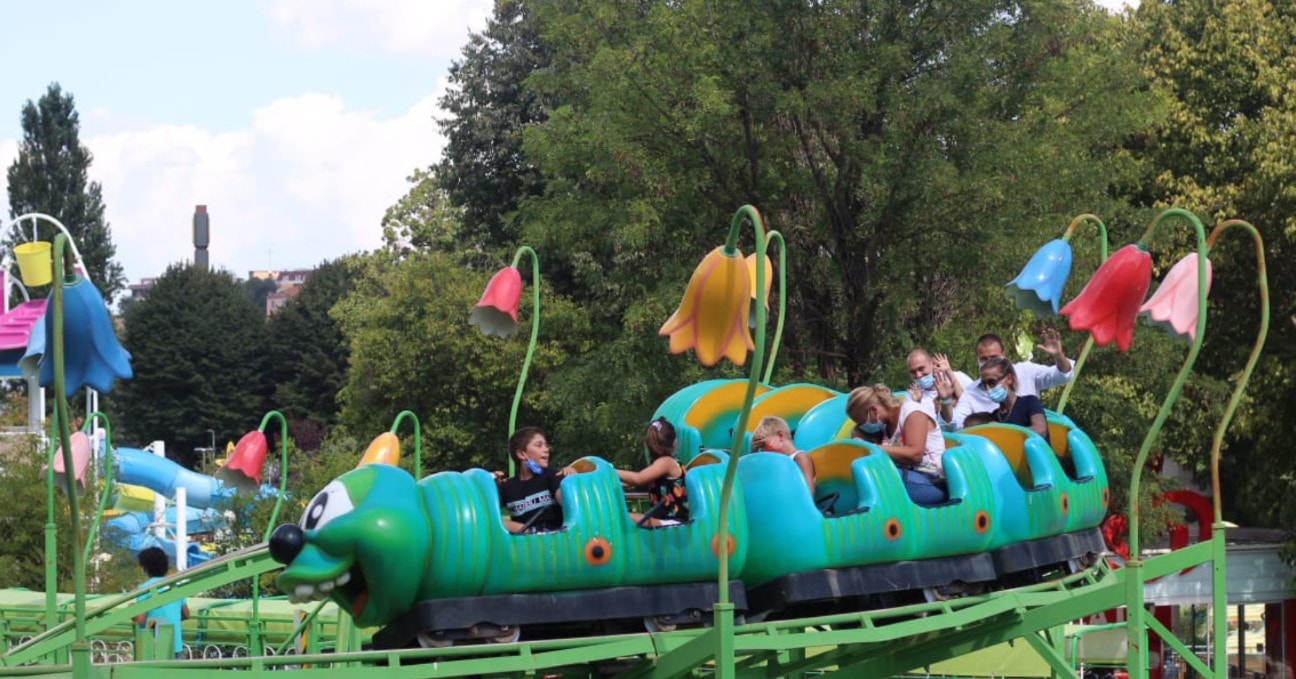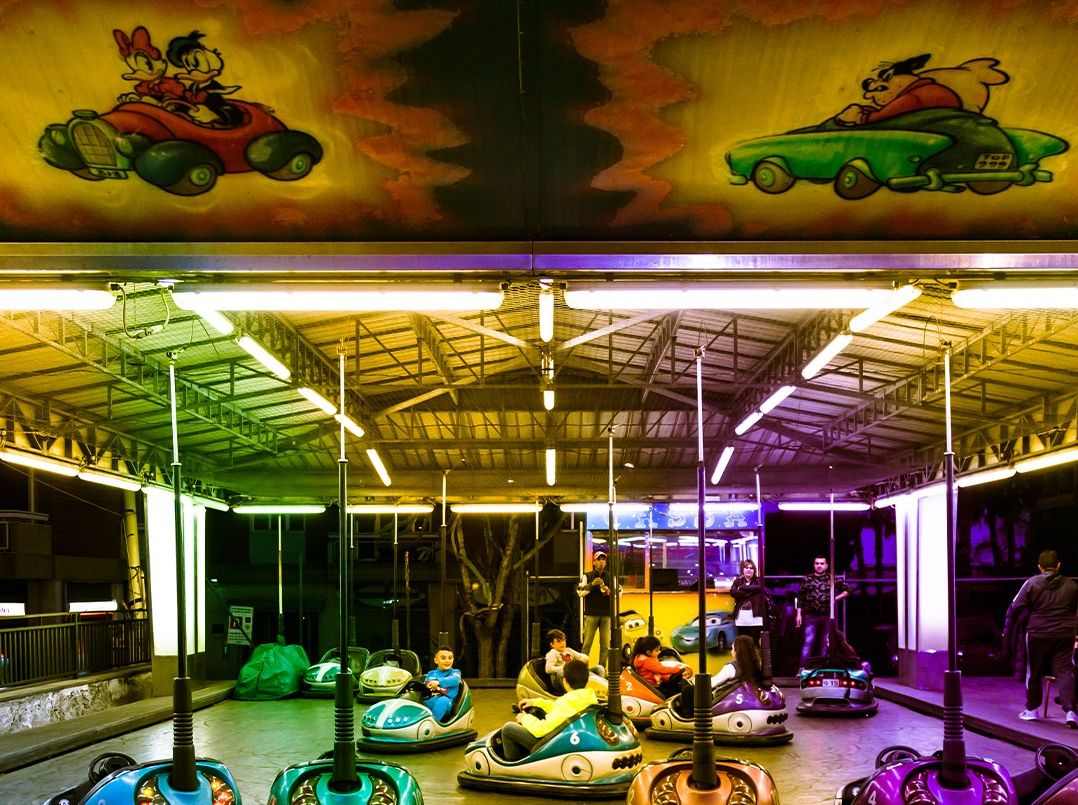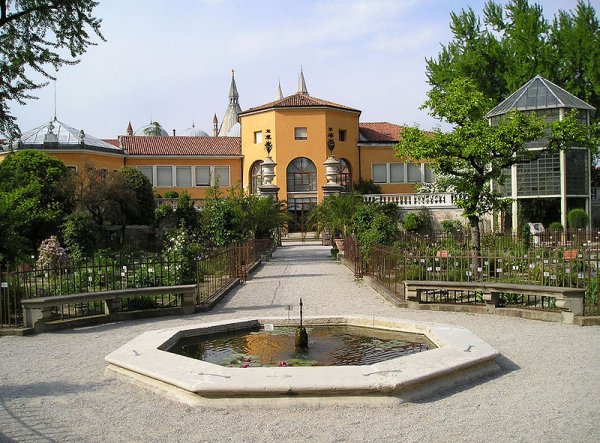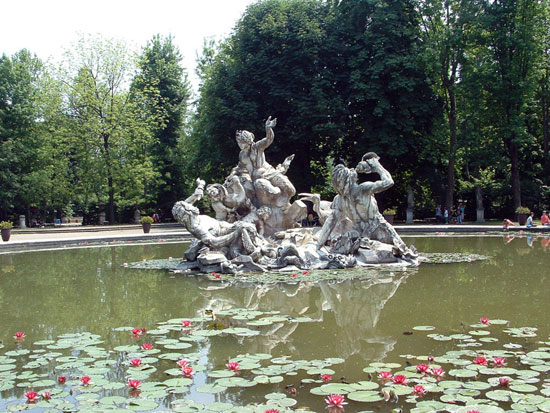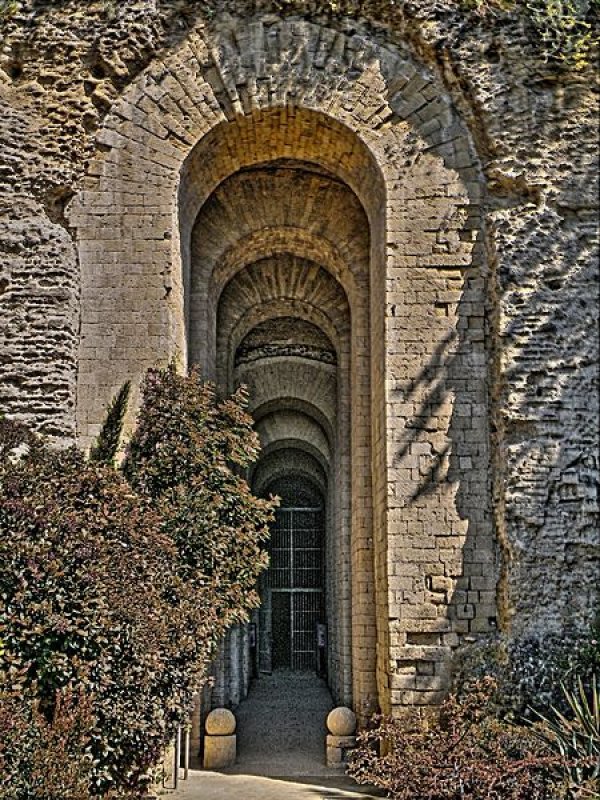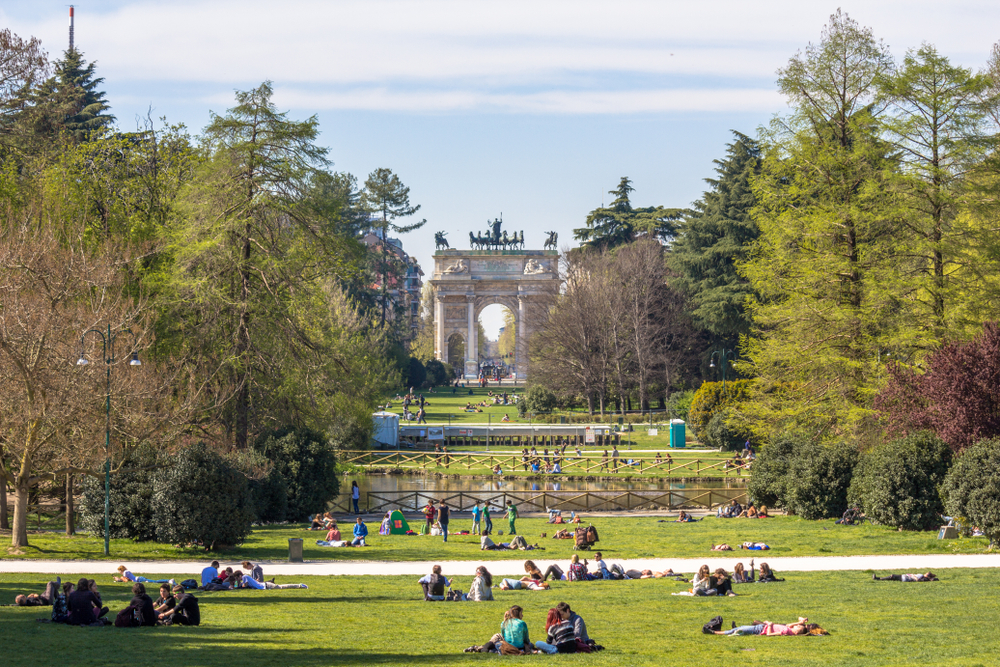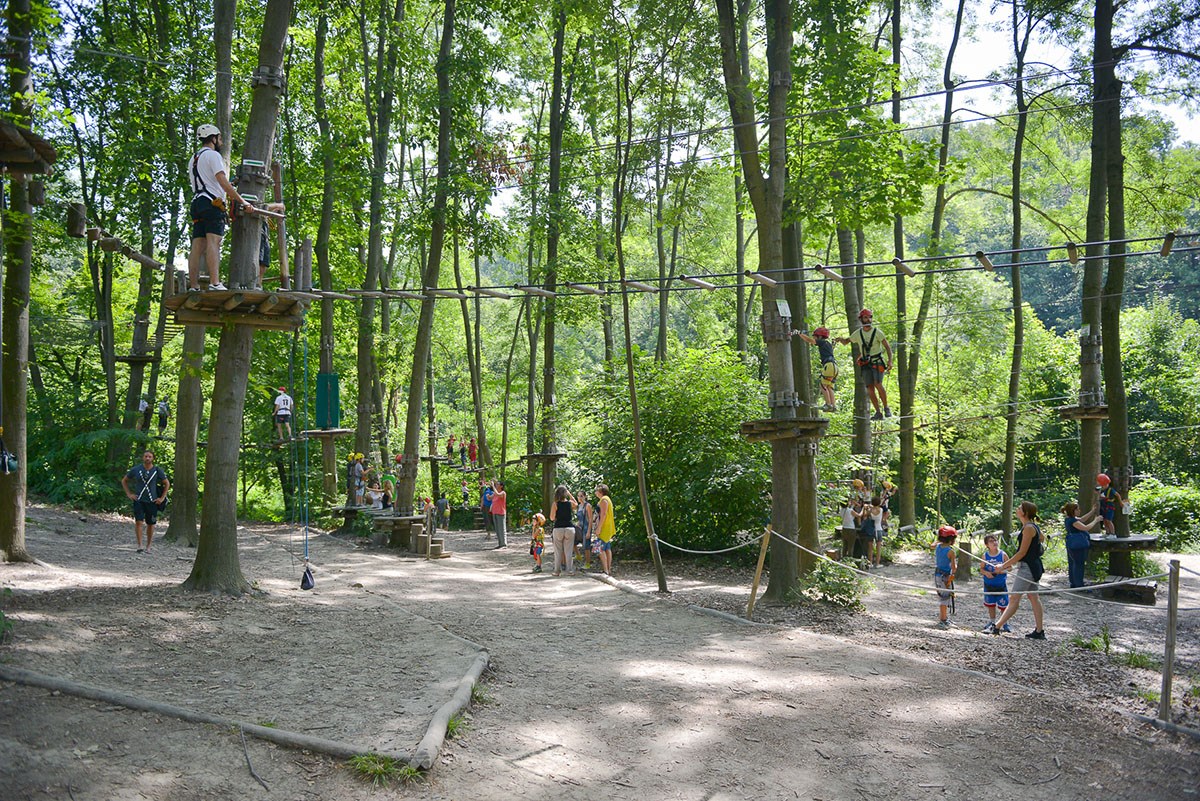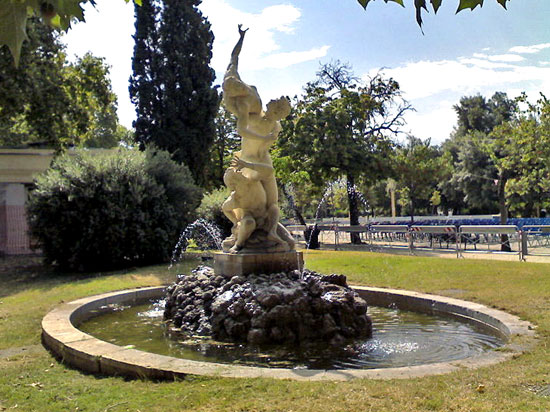Points of Interest
Abruzzo National Park
Viale Santa Lucia Pescasseroli, L'Aquila, Frosinone, and Isernia 67032 Italy
The Abruzzo National Park was founded in 1923. Although a major portion of the park area lies in Abruzzo, its expanded area includes the nearby towns of Lazio and Molise. The park's dominant vegetation cover consists of beech, which covers over 60 percent of the terrain, and exotic species like black pines, mountain pines, and silver birch. Wildlife includes brown bears, wolves, red and roe deer, polecats, badgers, otters, weasels, moles, hedgehogs, and a host of other animals. Among the birds, the golden eagle can often be seen patrolling the skies in search of prey. The park houses more than 2,000 species of plants including exotic species like the lady's slipper, a yellow and black orchid.
Astoria Village
1 Via Astoria, Sottomarina
30019 Chioggia, Venice, Italy
Astoria Village is an amusement park at the center of Venice’s peninsula known as Sottomarina. It offers more than 20 rides, games, and activities such as a mirror maze, canoe ride, carousel, trampolines, slides, ball pit, and log flume. There’s also a play area just for little ones. A restaurant serves a variety of seafood and drinks. In addition, nearby at Astoria Beach there are volleyball courts and a playground as well as chairs and umbrellas for relaxing.
Bellini Gardens
Giardini Bellini Via della Posta and Via Etnea Sicily
Catania, Italy
This popular central Catania garden opened to the public in 1883, having been the property of a local landowner for the previous century. It is dedicated to the city's favorite son, Vincenzo Bellini, the composer whose work was so smooth that they called him Il Cigno, the Swan. Among the sculptures is a bust of the musical prodigy, but Bellini is only one of several local notables featured. Included in the "Way of Illustrious Men" are busts of music teacher and critic Francesco Pasture, poet and playwright Nino Martoglio, composer Francesco Frontini, writer Luigi Capuana, and politician Giuseppe Mazzini. If you're in need of refreshments, there are a couple of interesting options. Look out for the candy stores at the end of Umberto Street (opposite the main gate), which sell frutta martorana, marzipan shaped like fruit. There's also a stand-up bar in the park where the local cops hang out.
Bioparco
20 Viale del Giardino Zoologico
00197 Rome, Italy
The Bioparco, originally known as the Giardino Zoologico di Roma (Rome Zoo), was inaugurated in January 1911. Gradual extension and modernization has made it possible for the zoo to now house about 1,114 animals of over 222 species. While the wild animal inhabitants include lions, tigers, monkeys, elephants, bears, hippopotamuses, giraffes, and zebras, the park also has a farmyard with domestic animals like pigs, goats, and cows. The zoo also provides facilities like shady rest areas, drinking water fountains, benches, a café, and a restaurant.
Boboli Gardens
Giardino di Boboli 1 Piazza Piazza dei Giudici
50122 Florence, Italy
Established by the wealthy Medici banking family of Florence, Boboli Gardens features statues, fountains, and artificial caves called grottoes. Wander all the sights of the garden that became a model for royal courts throughout Europe. Offering a vast green space within the city, kids can toss a coin into the Fountain of the Ocean before you set up a family photo in front of the 18th century, rounded pavilion called the Kaffeehaus. There also is the Lemon House, home to hundreds of historic citrus plants collected by the Medicis. Terraced areas, a botanical garden, a branched archway, a central reflecting pool, and more, provide for a lovely natural escape and place to relax or enjoy a picnic. The gardens' popular attractions include masterpieces like The Prisoners by Michelangelo (though the version currently here is a replica, not the original), Bathing Venus by Giambologna, and the 18th-century Paris and Helen by Vincenzo de Ross. From its entrance behind the Palazzo Pitti (Pitti Palace) the garden gradually slopes upward; be sure to look back toward the palace as you near the top for a grand view of the central city beyond.
Botanical Gardens of Brera
28 Via Brera
Milan, Italy
Escape the city hustle and bustle for a little relaxing family time here. These 5,000 square meters (54,000 square feet) of lawns, flowerbeds, and 18th-century elliptical ponds, located just behind Brera Art Gallery in the center of Milan, are a plant-lover's field day. One of the oldest Ginkgo biloba trees in Europe is located here, as are countless species of mature flora in greenhouses dating back to the 19th century. Orto Botanico di Brera's founder, Maria Theresa of Austria, originally intended the gardens for the use of medical and pharmacological students. Today the University of Milan and the Academy of Fine Arts operate the place as a research center. Entry is completely free, and the gardens are open all day, every day.
Capodimonte Park
4 Via Miano
80145 Milan, Italy
Not many parks include a royal palace within, but hey, this is Italy and Capodimonte Park dates to medieval times. It also is one of the country’s largest parks at 50 hectares (124 acres). It includes lakes, woods, and large green areas, so plan to explore the wooded paths, admire statues, and toss a few coins into the fountains. Overall, there are plenty of attractions that make a few hours here both engaging and enjoyable. Not least for nature lovers will be the more than 400 plant species, some found in English-style gardens. Bring a picnic or ball to toss and relax while the kids roam nearby.
Caribe Bay
15 Via Michelangelo Buonarroti
30016 Lido di Jesolo, Venice, Italy
A huge pirate-themed waterpark, Caribe Bay has entertainment for every member of the family. It offers a variety of pools and waterslides for all ages. Shallow play areas with fountains and water-spraying canons are available for little ones. Additional attractions include miniature golf, waterfalls, climbing walls, bungee jumping, a high ropes bridge, 135-meter-long (443-foot-long) crazy river, and jungle jump. Shops and eateries provide souvenirs and refreshments.
Cinque Terre
Five Lands West of La Spezia
Liguria, Italy
Cinque Terre (Five Lands) is a group of five coastal villages that, along with the coastline and the surrounding hills, lie within a national park of the same name. The villages, from west to east, are Monteresso al Mare, Vernazza, Corniglia, Manarola, and Riomaggiore. Transportation between the five islands is by either ferry or a train service, which links the five villages and runs mostly through tunnels, offering clear but intermittent views of the Mediterranean Sea. Trails connect each of the villages and range from easy walks to steep climbs surrounded by olive orchards and vineyards. The trails provide visitors with great views of the bay and surrounding areas.
Cinque Terre National Park
Parco Nazionale delle Cinque Terre La Spezia
19017 Liguria, Italy
The park was established in 1999 encompassing an area of 3,860 hectares (9,538 acres) including five villages and their surroundings. The park's terrain includes a rocky landscape and a few sandy beaches filled with pebbles. Its linear coast features jagged areas, including inlets, promontories, and caves. The park was created to preserve the natural environment of the area's marine and plant life, including the 1,000-year-old terraced hillsides where some of Italy's finest vineyards are cultivated.
Civic Aquarium of Milan
Sempione Park, 2 Viale Gadio
Milan, Italy
Built for the 1906 Milan Universal Expo, Civic Aquarium of Milan consists of 36 enormous tanks and pools, all providing a fascinating experience your kids should enjoy. There are more than 100 species of fish living in authentic re-creations of marine environments, ranging from the Mediterranean to Africa to Southeast Asia to the Amazon—the last featuring razor-toothed piranhas. Though there is a bias toward fresh and saltwater native Italian sea life, there’s a vast selection of foreign species as well. Educational events suitable for the whole family take place throughout the year, and the aquarium's marine biology library, repository, and archives are the most extensive in the whole of southern Europe. Check the website for information on special events, temporary exhibits, and operating hours.
Etnaland
Contrada Agnelleria
95032 Belpasso, Catania, Italy
In Catania’s Belpasso municipality, Etnaland is one of the country’s most popular family attractions, offering both a theme park and waterpark. A variety of rides are available such as rollercoasters, carousels, rotating swings, electric boats, a train, log flume, cable car, and more. Additional entertainment includes a 4D cinema, fun house, laser show, go-karts, and bumper boats. The waterpark has a range of waterslides for all ages as well as a lazy river and wave pool. In addition, there are plenty of shallow play areas with small slides and spray features for little ones. Vendors sell refreshments and souvenirs.
Hydromania
200 Vicolo del Casale Lumbroso
00166 Rome, Italy
Rome’s largest and most popular waterpark, Hydromania is a fun place for families to spend a day under the sun. The park has several pools and a variety of waterslides for all ages. A DJ plays music at the wave pool. Whirlpools provide a place to relax and enjoy a massage. A shallow play area with small slides, spray features, and a water-dumping fish is available for the littlest guests. A sandy area offers beach volleyball as well as chairs and umbrellas. Guests also can play soccer on the park’s synthetic grass. In addition, a kids’ club has live entertainment such as magic shows. Vendors sell refreshments and souvenirs.
Italy In Miniature
Via Popilia 239
Rimini, Italy
Italy in Miniature is an 85,000-square-meter (914,932-square-foot) theme park containing accurate scale replicas of over 270 famous Italian and European monuments and scenic spots. Ivo Rimbaldi created the miniature monuments using foam resin, ideal against wear and tear caused by the weather. The park has a beautiful landscape dotted with flowers and bonsai trees, in which miniature moving trains, motorways, cable cars, ships, ports, airports, and popular attractions make up the park's highlights. Across a replicated border of Italy is a miniature Europe. The perfection of the miniatures is a visual treat, and the park draws more than 500,000 visitors annually.
Luneur Park
100 Via delle Tre Fontane
00144 Rome, Italy
Rome’s Luneur Park offers family-friendly entertainment. It has a variety of rides such as a Ferris wheel, caterpillar-shaped rollercoaster, carousel, and rotating swings. The park’s Splash Zone features various waterslides and a water-dumping bucket as well as chairs and umbrellas for resting. Additional attractions include an inflatable bounce house, high ropes course, and innertube slide. The park also is home to miniature horses, sheep, and llamas. Several eateries serve hamburgers, hot dogs, French fries, pizza, drinks, ice cream, and other refreshments.
Neapolitan Crypt
Cripto Napolitana Piedigrotta
Naples, Italy
Few historical characters have been given as many posthumous attributions as Virgil. This classic poet of the Aeneid, who died in 19 BCE, is supposedly buried in the ancient grotto (a tunnel, actually) designed to connect Naples to Pozzuoli. Lore has it that Virgil conjured the legendary tunnel into being through his powers of sorcery (the same powers that got an egg to hold up the Castel dell'Ovo for two millennia and counting). Whether or not Virgil is interred here, another influential poet is: Italy's beloved Giacomo Leopardi (died 1837); and the park and tunnel are lovely to behold.
Nettuno Park
47 Via del Rotolo
95126 Catania, Italy
Founded in 1965, Nettuno Park is one of Catania’s oldest amusement parks. It offers a variety of classic rides such as a carousel, bumper cars, and small caterpillar-shaped rollercoaster. Visitors can try their luck at winning prizes by playing midway-style games. Additional attractions include a 4D cinema and gaming arcade. Vendors sell refreshments and souvenirs.
Padua Botanical Garden
Orto Botanico di Padova 15 Via Orto Botanico Padua
35123 Veneto, Italy
Created in 1545, Orto Botanico is the world's first academic botanical garden and still preserves its original circular layout surrounded by water. The garden, spread over an area of approximately 22,000 square meters (236,806 square feet), is used by the University of Padua for academic purposes. Although the original focus was on the study and growth of medicinal plants, the botanical garden has made remarkable contributions towards medicine, botany, ecology, and pharmacy over the years. Some of the rare specimens in the garden include a gingko and magnolia tree from the 1700s, a huge plane tree from 1680, and the oldest plant in the garden, a palm tree planted in 1585 called the Goethe Palm.
Royal Gardens
I Giardini Reali Piazza Castello
Turin, Italy
Reputedly the vortex for powerful magic, these gardens beside Piazza Castello date back to the 16th century. In Torinesi sorcerers' lore, they contain the center for "good magic:" the Fountain of the Naiads and Tritons. For the answer to dilemmas, locals say, walk three times around the fountain and the solution will become clear. Whether you believe in witchcraft or not, it is certainly true that this park has a little magic in its make-up. They were commissioned by Emanuele Filiberto, the same Savoyard patron of the arts who constructed the Palazzo Carignano. In the following century, they were enlarged by Amedeo Castellamonte, and then revamped by André Le Nôtre. Le Nôtre's name will be familiar to garden lovers worldwide-he was the Frenchman responsible for many of 17th-century France's most famous green spaces, including the Château de Fontainebleau, Vaux-le-Vicomte, and Versailles.
Seiano Grotto
Grotta di Seiano Naples, Italy
The grotto part of this title is a misnomer: rather than a cave, the Grotta di Seiano is an ancient tunnel leading to a first-century Roman villa. Former slave and self-made man (and notoriously cruel) Pollio enjoyed the views from his royal residence, and upon his death he turned the estate over to none other than Caesar Augustus. The villa, amphitheater, and statues once part of this royal Roman estate are in ruins, but the tunnel was repaired by the Bourbons and remains in good shape today. A park, Parco Archeologico-Ambientale del Pausilypon, was created around the site. It also contains a visitors' center and an underwater park.
Sempione Park
Parco Sempione (Simplon Park) Piazza Sempione
Milan, Italy
Established in 1888, Sempione Park encompasses 38.6 hectares (95 acres), spacious enough for the family spread out and relax. Located in the historic center of Milan, the park is next to two famous landmarks, the Sforza Castle and ornately decorated city gate, the Arch of Peace (Arco della Pace). Kids will enjoy the playgrounds and small, rideable train. The 100-meter-tall (328-foot-tall) steel tower, Torre Branca, is one of the city’s highest points, providing panoramic views after an elevator ride to the top. The most outstanding monument here, however, may be the Arco Sempione, which many have compared to Paris’s Arc de Triomphe. Bring a picnic and a ball to toss as you enjoy this lovely free attraction.
Three Oaks Adventure Park
Parco Avventura Tre Querce Panoramic Road
10025 Pino Torinese, Turin, Italy
Opened in 2012, Three Oaks Adventure Park is located within Collina di Superga Natural Park in Turin’s Pino Torinese municipality. It offers 11 different high ropes courses featuring more than 80 aerial games for a range of skill levels. There are even two courses just for ages 3 to 6. There are various obstacles along the courses such as rope ladders, bridges, nets, swings, ziplines, and more. Additional climbing structures include walls and a tree. Guests can play at the park for up to three consecutive hours, and afterwards there are hammocks available for resting. Safety equipment and training is provided.
Valentino Park
Parco del Valentino Southeast corner of Corso Massimo D'Azeglio and Corso Victor Emmanuel II
Turin, Italy
On the north bank of the river Po, in the center of the park, is Castello di Valentino, the former hunting lodge which was converted into a castle by French-born Maria Cristina, the free-spirited wife of Victor Amadeus I, Duke of Savoy. Look for the French touches in the sloping slate roofs of the castle, which was redesigned by Carlo di Castellamonte. Aptly, the building is now occupied by the architecture faculty of Turin's Polytechnic University. Though the castle is off-limits to visitors, the park itself is full of interesting little features. As consort to the Duke of Savoy, Maria Cristina spent much of her time here, and was determined to create a varied and distinctive playground, from the Borgo Medievale (Medieval Village) to the Fontana dei Dodici Mesi (Fountain of 12 Months), from the Principessa Isabella Bridge to the botanical gardens of 1729, comprising an arboretum, hothouse, and herbarium.
Villa Comunale
Piazza Vittoria
Naples, Campania 80121, Italy
The Villa Comunale is one of Naples' few green spaces, and a beloved one at that. King Ferdinand had it developed in 1788 for his family to enjoy, when once a year the park opened to the public. Once upon a time, legend has it, some marriage contracts included a stipulation on the wife's part that her betrothed must bring her to stroll in this royal park each year on the open day. The park was opened to the public in 1869. It houses the Continent's oldest aquarium, and on the first Saturday of the month it hosts an antiques market.
Copyright © 1993—2025 World Trade Press. All rights reserved.

 Italy
Italy 